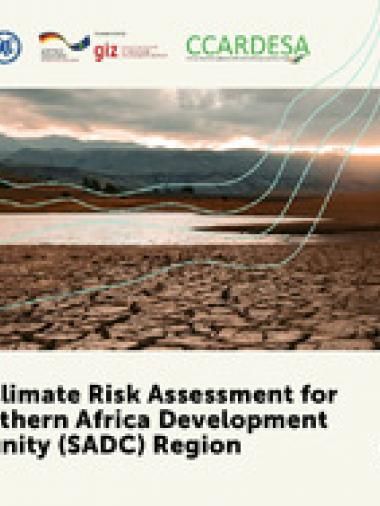Rapid Climate Risk Assessment for the Southern Africa Development Community (SADC) Region

This rapid climate risk assessment for the Southern Africa Development Community (SADC) uses the Intergovernmental Panel on Climate Change (IPCC) 2014 risk analysis framework to assess the distribution of climate hazards and social and biophysical vulnerability to those hazards in order to identify climate risk hotspots.
The assessment uses regional climate models from CORDEX-Africa to map rainfall extremes and drought hazards to 2031–2059. Ten social and biophysical vulnerability indicators are identified from across the capital assets (human, physical, social, financial, natural), using data from the Global Multidimensional Poverty Index (MPI), to develop a vulnerability index. The vulnerability index and distribution of climate hazards are mapped to identify hotspots.
Hotspots of vulnerability to and risk of extreme rainfall are shown in northern Madagascar and in south west Tanzania, under both the RCP4.5 and 8.5 scenarios. These hotspots also correspond to the hotspots for drought risk under RCP4.5 and 8.5. However, it is clear that medium-high climate risk (high vulnerability, medium-high climate hazard) is widespread across Angola, Democratic Republic of the Congo (DRC), Tanzania, Mozambique, and Madagascar.
Citación
Quinn C, Carrie R, Chapman S, Jennings S, Jensen P, Smith, Whitfield S. 2020. Rapid Climate Risk Assessment for the SADC Region. SADC Futures: Developing Foresight Capacity for Climate Resilient Agricultural Development Knowledge Series. CCAFS Report. Wageningen, the Netherlands: CGIAR Research Program on Climate Change, Agriculture and Food Security (CCAFS).